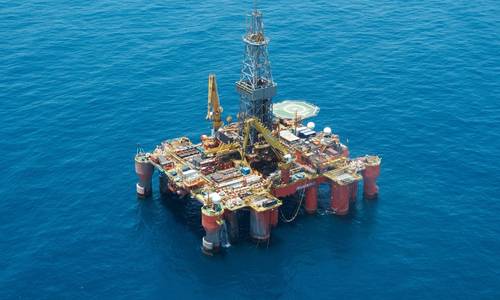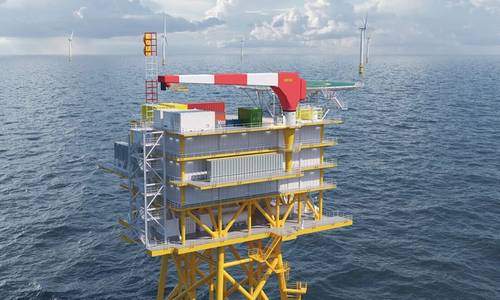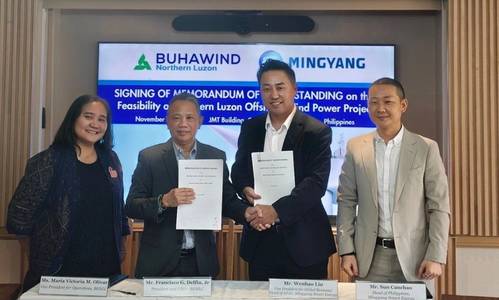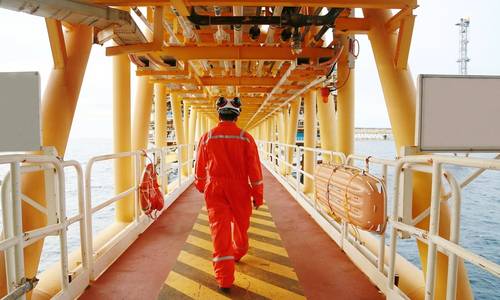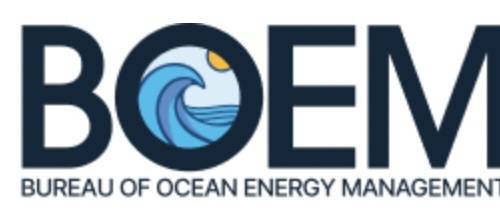Efficiency First: Inside Olympic Subsea’s Bet on Greener Offshore Vessels
Josefine Spiro
November 11, 2025

A new generation of hybrid vessels is demonstrating significant gains in both fuel economy and operational output. For Olympic Subsea’s owner and CEO Stig Remøy, it proves that technology-led efficiency is the fastest path to decarbonization—and a powerful business case.
When Stig Remøy began pivoting Olympic Subsea toward subsea and renewables a decade ago, the move was met with some internal skepticism. “Naturally, there were internal discussions — some believed oil and gas was the future,” he recalled. Rather than exit the conventional market, Remøy backed a dual-track strategy centered on a simple, guiding principle: cut energy use first.
From his company's headquarters in Fosnavåg, a small town on Norway's northwestern coast and the heart of a world-leading maritime cluster, Stig Remøy sat down with Offshore Engineer to explain his strategy.
“We build and operate ships that serve both offshore wind farms and traditional oil and gas fields, because the transition takes time," Remøy explained. This approach is embodied in a new generation of vessels, including hybrid-electric CSOVs already in service and advanced Sustainable Energy Vessels (SEVs) on the way.
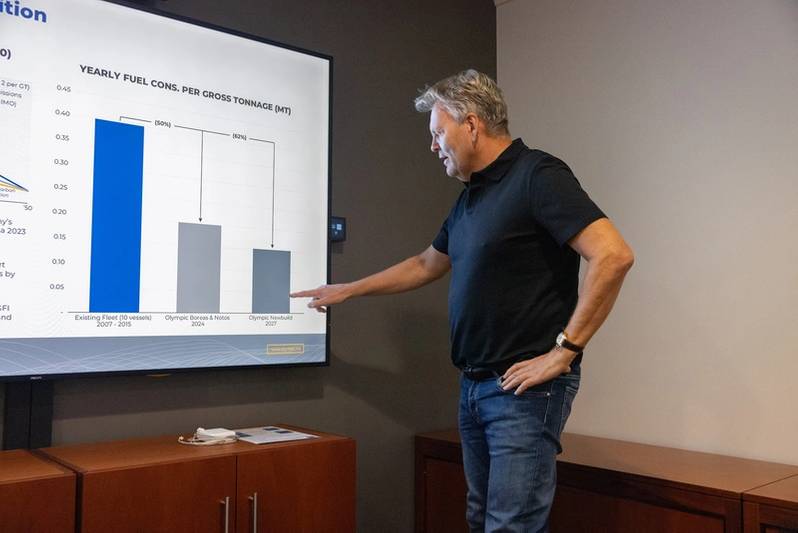 Stig Remøy presents data demonstrating the success of his 'efficiency first' strategy. The chart shows that the new CSOVs, Olympic Boreas and Olympic Notos, have achieved a roughly 50% reduction in fuel consumption per gross tonnage compared to the company's older vessels , proving the business case for the new technology.
Stig Remøy presents data demonstrating the success of his 'efficiency first' strategy. The chart shows that the new CSOVs, Olympic Boreas and Olympic Notos, have achieved a roughly 50% reduction in fuel consumption per gross tonnage compared to the company's older vessels , proving the business case for the new technology.
Copyright Josefine Spiro
The Efficiency Doctrine
Olympic’s strategy has been a systematic technological progression. “We started transitioning early, back in 1999,” Remøy said. “We focused heavily on energy: first diesel-electric instead of diesel-mechanical, then hybrid”. The latest vessels layer on more advanced solutions, including a four-thruster azimuth propulsion system — providing what Remøy likens to a maritime ‘four-wheel drive’ — as well as permanent-magnet (PM) technology, variable-speed generators, and waste-heat recovery systems.
The impact is substantial. A modern vessel of around 6,700 gross tonnes with up to 126 personnel can now operate on approximately three tonnes of fuel per day in certain scopes, whereas older conventional ships might consume three to four times that amount.
Remøy emphasized that the economics support these higher-cost, higher-efficiency choices. “These kinds of technology choices have always paid off for us," he said. "When we built our first diesel-electric PSV in 1999, conventional options were about 20% cheaper, but we chose it because we knew the energy had to be paid for... With carbon taxes multiplying by 2030, the return on energy efficiency will only get bigger”.
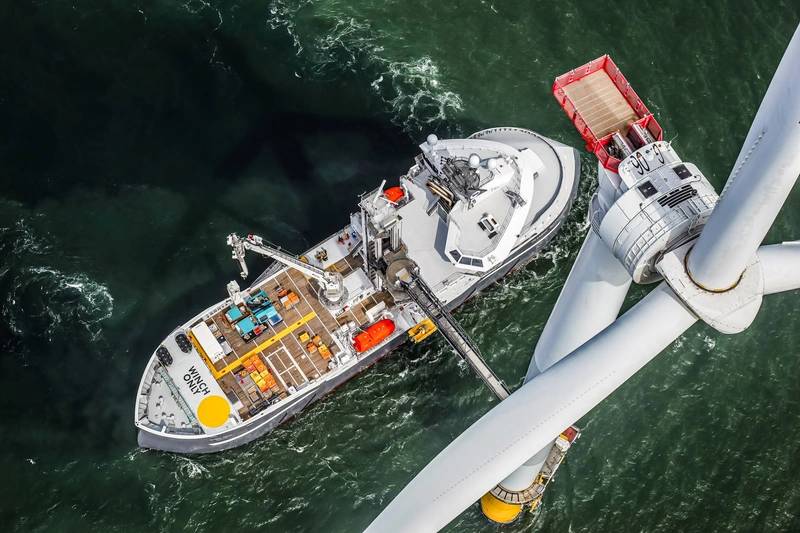 An Olympic Subsea CSOV maintains its position next to an offshore wind turbine, showcasing the 'walk-to-work' operations essential for maintenance. The vessel’s advanced design is key to maximizing uptime and operational efficiency in the renewables sector.
An Olympic Subsea CSOV maintains its position next to an offshore wind turbine, showcasing the 'walk-to-work' operations essential for maintenance. The vessel’s advanced design is key to maximizing uptime and operational efficiency in the renewables sector.
Image courtesy Olympic SubseaA New Generation of Hardware: The SX222 and UT 7623
Leading this new generation are the company’s two Ulstein-designed SX222 CSOVs, Olympic Boreas and Olympic Notos. Built at Ulstein Shipyard using state-of-the-art Norwegian technology, its bi-symmetrical TWIN X-STERN hull is purpose-built for both wind and subsea work, allowing either end to face the weather to reduce energy use during dynamic positioning.
The results in the field are stark:
●Operational Output: Independent client measurements confirm more than 25% higher operational efficiency than competitors. On wind farms like Horns Rev, for example, the vessels can service up to 200 turbines in the time it takes others to manage 150.
●Energy Savings: Olympic’s own data reveals the new systems have driven a roughly 50% reduction in energy consumption compared to its 2012-era fleet.
“The uplift comes from the total system,” Remøy argued. “It’s the vessel itself, the gangway, how quickly you get to the tower, how efficiently the engineers can perform maintenance, and how you manage the weather windows”. A key component is the vessel's W-type Ampelmann gangway, a fully electric system with an integrated lift and a large operational envelope, compensating for landing heights from approximately 8 to over 30 meters.
Building on these lessons, the next leap is the Kongsberg UT 7623 SEV. Developed in partnership with Kongsberg Maritime, two of these Sustainable Energy Vessels are slated for delivery in 2027. These vessels incorporate close to NOK 1 billion in equipment and technology from the Norwegian maritime cluster per pair. "We are aiming for at least a 10% further reduction on the newbuilds... we invest more to achieve lower consumption and higher efficiency," Remøy stated.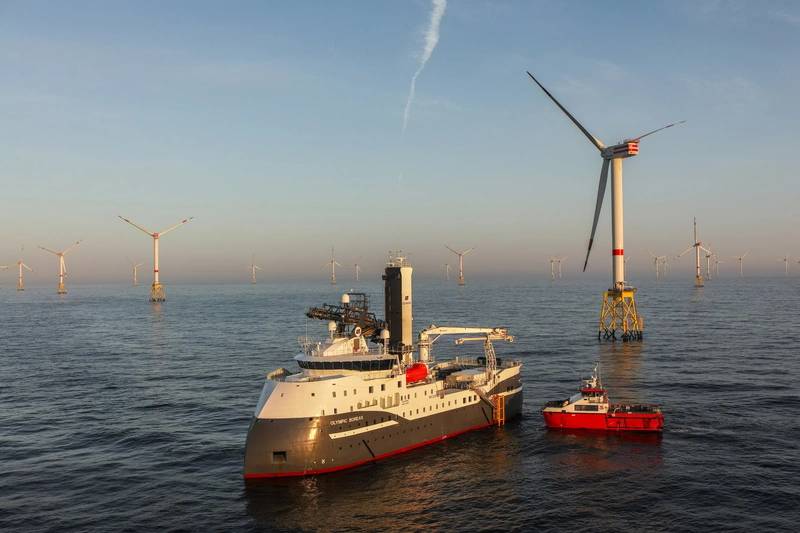 The hybrid-electric CSOV Olympic Boreas, an Ulstein-designed SX222, operates in an offshore wind farm. Vessels like this are central to Olympic's strategy, embodying a new generation of hardware that significantly cuts fuel consumption while boosting operational output.
The hybrid-electric CSOV Olympic Boreas, an Ulstein-designed SX222, operates in an offshore wind farm. Vessels like this are central to Olympic's strategy, embodying a new generation of hardware that significantly cuts fuel consumption while boosting operational output.
Image courtesy Olympic Subsea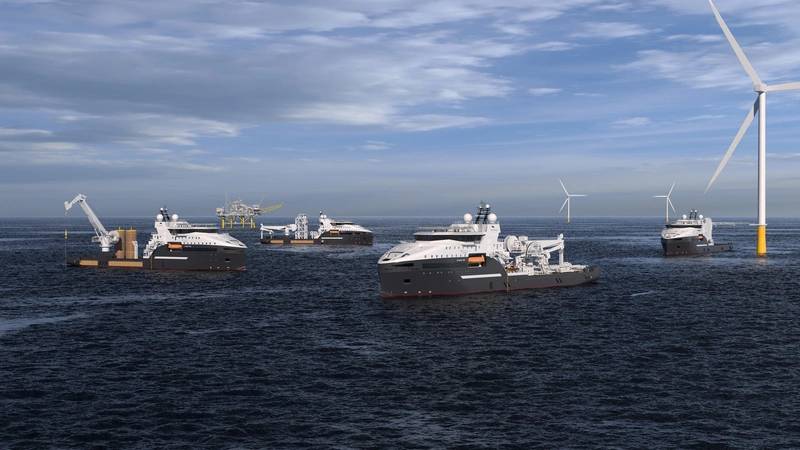 A rendering of the Kongsberg UT 7623 Sustainable Energy Vessels (SEVs) slated for delivery to Olympic Subsea in 2027. The design visualizes the company's dual-market strategy, with vessels capable of serving both offshore wind and traditional oil and gas installations.
A rendering of the Kongsberg UT 7623 Sustainable Energy Vessels (SEVs) slated for delivery to Olympic Subsea in 2027. The design visualizes the company's dual-market strategy, with vessels capable of serving both offshore wind and traditional oil and gas installations.
Image courtesy Olympic Subsea
Remøy Proposes a CO₂ Fund
With Norway’s CO₂ tax expected to rise significantly by 2030, Remøy argues passionately that the industry needs a mechanism to accelerate its green transition. His solution is a dedicated CO₂ fund, modeled directly on the country's NOx Fund—a framework that has been a proven success in financing emissions-cutting projects since 2008.
“The tax should be returned to the industry through a CO₂ fund. That way, shipping companies can invest in green technology that actually cuts emissions”.
Remøy pointed out that such a system would create a powerful circular economy for decarbonization. It would not only incentivize shipowners to adopt new technologies but also strengthen the Norwegian equipment industry's global competitiveness by scaling up demand for innovative, cost-effective solutions. “In Norway, we should do the same as the EU requires and ensure the money is used for emission reductions, with simple administration and clear, measurable effects,” he stated.
The Business Case
The strategy is already rebalancing the company’s portfolio. “Ten years from now, renewables will be our most important leg to stand on,” Remøy predicted, “but oil and gas will be around for decades and will need efficient infrastructure. Our newbuilds fit both.”
This versatility and performance are key for clients like Siemens, RWE, Ørsted, and GE. This success, Remøy insists, is rooted in local collaboration. “The Norwegian maritime cluster is absolutely crucial,” he explained. “Without close cooperation with suppliers and shipyards, we could not have achieved this.”
For Remøy, the path forward is clear and pragmatic. “Our approach is to lead by cutting energy consumption first,” he concluded. “After that, the choice of fuel—be it methanol, hydrogen, ammonia, or battery—can follow once the market and infrastructure are ready.”
The once-skeptical voices have grown quieter as the data from the new fleet comes in, proving that the big bet on efficiency is already paying off—not just in lower emissions, but in the hard-nosed economics of offshore operations.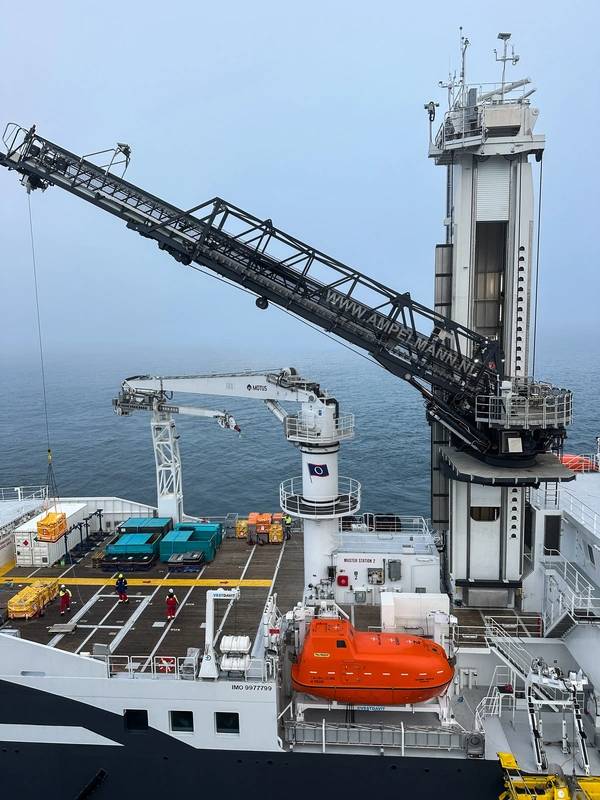 The fully electric, W-type Ampelmann motion-compensated gangway is a key component of Olympic's new CSOVs. The system provides safe and reliable 'walk-to-work' access for technicians with an integrated lift and a large operational envelope.
The fully electric, W-type Ampelmann motion-compensated gangway is a key component of Olympic's new CSOVs. The system provides safe and reliable 'walk-to-work' access for technicians with an integrated lift and a large operational envelope.
Image courtesy Olympic Subsea

